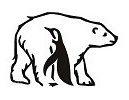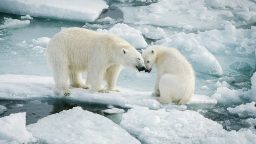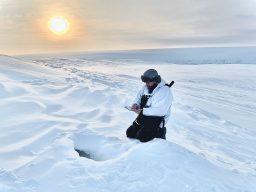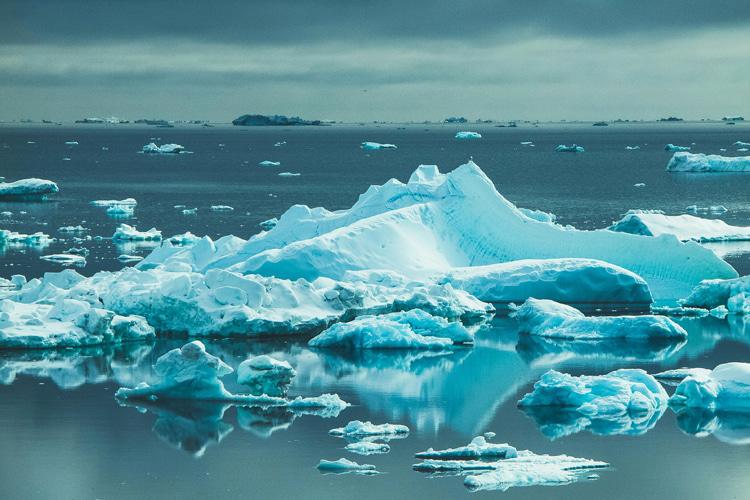
Photo: Jensen/Creative Commons
What makes the Arctic Ocean unusual?
The Arctic Ocean is the smallest of the oceans in the world. This unique body of water, located around the North Pole, borders Eurasia, North America and Greenland and covers an area of about 5,440,000 square miles (14,090,000 square kilometers).
The exploration of the Arctic in the 18th and 19th centuries was driven by the search for trade routes between the Atlantic and Pacific Oceans. A major milestone was reached when, in 1909, an American expedition led by Robert Peary first reached the North Pole by dog sledding.
To begin with, it is covered with perennial or seasonal sea ice, which makes it unique among Earth’s oceans. Despite being the smallest, it is five times the size of the Mediterranean Sea. Under the ice, the depth of the Arctic Ocean averages 3,240 feet (987 meters).
Interestingly, melting ice in the Arctic opens up new shipping routes, such as the Northern Sea Route along Siberia, and exposes potential resources, such as oil and gas deposits.
The Arctic Ocean is divided into two major basins: the Eurasian Basin and the American-Eurasian Basin. These basins are divided into smaller basins, such as the following basins: seas of Russia, Canada, Nansen, Fram, Makarov.
The Lomonosov Ridge, discovered in 1948, separates the basins of Eurasia and Americasia. It stretches for 1,770 kilometers (1,100 miles) and rises about 3,000 meters (10,000 ft) above the seabed. There is also a vast continental shelf in the Arctic Ocean, which occupies about a third of its area.
Bathymetric maps of the Arctic Ocean show complex structures such as deep-sea plains, ridges, and uplands that are not visible from the surface.
The Arctic has attracted human curiosity for centuries. Ancient Greek philosophers speculated about the “midnight sun” and the “eternal darkness” of the Arctic. In fact, the word “Arctic” comes from the Greek word “arktikos” (ἀρκτικός), which means “bearish” or “northern”.
And it comes from “arktos” (ἄρκτος), which means “bear”, and refers to the constellations Great Bear and Little Bear, which are clearly visible in the northern sky.
The latter contains the North Star, which has historically been used for navigation in the northern hemisphere. In addition, the mythical land of Hyperborea, which was considered a warm paradise beyond the Arctic, inspired researchers.
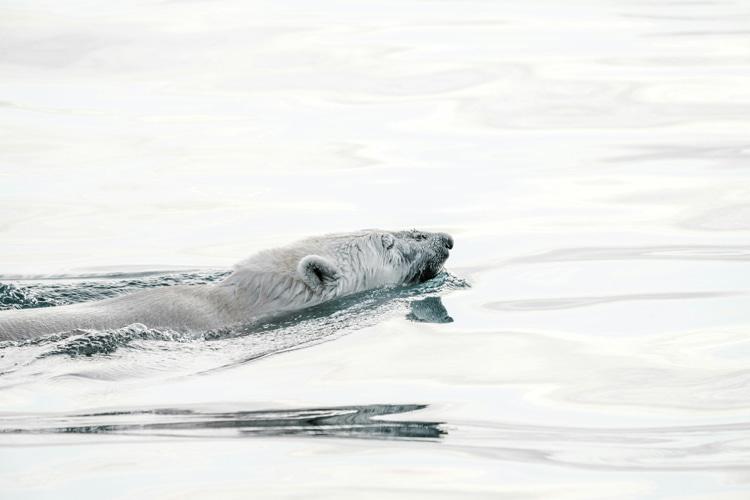
The bear is an Arctic predator | Photo: Spratt/Creative Commons
Warmth in the past
Analysis of sedimentary rock cores shows that 40 million years ago the Arctic Ocean was warm and productive, but the formation of permanent sea ice began only about 850,000 years ago.
Arctic sea ice reflects sunlight, which significantly affects the global albedo (reflectivity of the planet) and the regulation of Earth’s temperature. Unfortunately, due to global warming, the area of sea ice has been decreasing by about 3 percent per decade since 1978.
Sea ice in the Arctic comes in various forms. Long-term ice, which is thicker (up to 12 feet) and smoother, differs from annual ice, which is thinner (about 6 feet) and saltier. Over time, the salts are washed out of the ice, and the old ice becomes suitable for melting and obtaining drinking water.
Sea ice forms between 60° and 75° north latitude and becomes more permanent above 75° north latitude. In summer, there is a significant change in albedo in the Arctic Ocean, increasing heat absorption as the ice melts. First-year sea ice grows faster than multi-year ice due to lower salinity.
These open areas of water and cracks in the ice provide limited heat exchange and are vital habitats for marine mammals such as seals and whales. Other unique formations include “pancake ice”, which forms in troubled waters, and melt ponds, which accelerate the melting of ice by increasing heat absorption.
Ice floes, large free-floating blocks of ice, can vary greatly in size and pose a danger to ships. In recent decades, the area of Arctic sea ice, which usually reaches a minimum in September, has decreased significantly.
The Arctic Ocean is often considered as an estuary of the Atlantic Ocean due to the exchange of water between them. Water enters and exits mainly through the Fram Strait, which connects the Arctic and Atlantic Oceans. A smaller stream passes through the Bering Strait, connecting it to the Pacific Ocean.
Sea ice drift is influenced by large oceanic gyres such as the Beaufort Gyre and the Transpolar Drift current. The surface circulation in the North Atlantic basin is dominated by the Beaufort gyre, while in the Eurasian basin subsurface currents move counterclockwise.
The movement of ice caused by wind also affects the pattern of Arctic water circulation. Finally, the salinity of Arctic waters is low, and the amount of precipitation is about ten times the amount of evaporating water.
And if you’re wondering how cold the water is there, then you might be surprised to learn that temperatures vary, but remain below freezing at the bottom and rarely exceed 37°F (3°C) in warmer tributaries from the Atlantic.
Sensitive Ecosystems
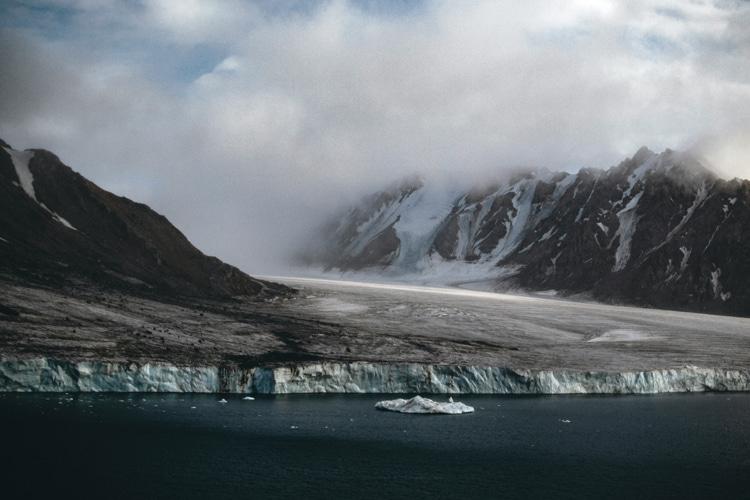
Baffin’s Land in Canada | Photo: Periquin/Creative Commons
Arctic sea ice restricts photosynthesis by blocking sunlight, which affects marine life. As a result, marginal seas are more biologically active due to the influx of rivers and the availability of nutrients. It is home to unique fish species such as Arctic cod, which play a crucial role in the food chain. The ocean is home to over 400 species of invertebrates, including starfish and sponges.
Marine mammals such as narwhals and belugas have adapted to life in icy waters in a unique way. Humpback whales, known for their thick body fat, are one of the few species of whales that live in the Arctic all year round. The polar bear, a large predator, relies heavily on Arctic sea ice when hunting seals.
Arctic zooplankton, such as oarfish and krill, form the backbone of the region’s food chain. Seasonal phytoplankton blooms occur when the ice melts, and become a key food source. The polar waters are home to specialized organisms, including phytoplankton under the ice.
However, Arctic ecosystems are sensitive to changes in salinity, temperature, and nutrient levels. Geographically, marginal seas such as the Barents and Kara seas are more biologically productive than the central Arctic waters.
Currents in the Arctic Ocean contribute to the formation of the North Atlantic Deep Waters (NADW), which are necessary for global thermohaline circulation. The Arctic Ocean acts as a climate regulator, helping to maintain global temperature through heat exchange.
However, since 1979, it has been heating up almost four times faster than the global average. Consequently, an increase in the amount of fresh water due to melting ice can disrupt the global water cycle, which will affect climate systems.
The accelerated melting of permafrost in the vicinity of the Arctic Ocean is releasing methane, a powerful greenhouse gas.
The open water in the Arctic Ocean absorbs more sunlight, which contributes to the phenomenon of Arctic intensification. Melting sea ice is affecting fishing in the northern regions, affecting global food supplies. The negative vicious circle of polar intensification and accelerated warming in the Arctic is destroying local ecosystems and changing weather conditions around the world.
Words by Luís MP. Source. Printed with abbreviations.
